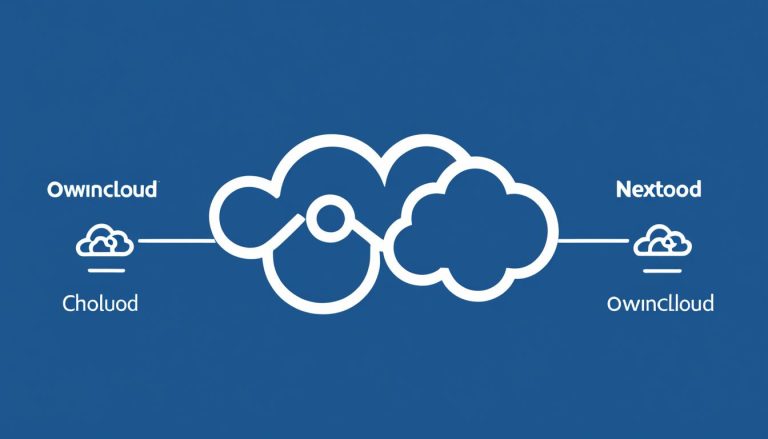What is a Schema: A Guide to Structured Data
I’m excited to present this comprehensive guide on understanding schemas and the role they play in the world of structured data. In today’s digital landscape, websites need to effectively communicate with search engines to enhance their visibility and provide users with relevant and engaging content. This is where schemas come into play.
Schemas are a standardized format for providing information about a web page and classifying its content. They enable search engines to better understand the context and meaning of a page’s content, resulting in more accurate search results. By utilizing structured data and implementing Schema markup, web pages become more readable and comprehensible for search engines, leading to improved visibility and user experience.
Key Takeaways:
- A schema is a standardized format for providing information about a web page and classifying its content.
- By using structured data and Schema markup, web pages become more readable and comprehensible for search engines.
- Schemas enable search engines to better understand the context and meaning of a page’s content, resulting in more accurate search results.
- Schema markup increases the chances of web pages being displayed as visually enhanced search results, known as rich snippets.
- Implementing Schema markup requires an understanding of different types of schemas and their application to relevant page content.
Importance of Schema in Cognitive Science and Memory
Schemas are not limited to web pages. In fact, they play a vital role in cognitive science and memory. Think of schemas as mental frameworks or cognitive structures that help us organize and interpret information. They provide a structure for understanding and interpreting new information, allowing us to make sense of the world around us.
One important function of schemas is their ability to help us process information more efficiently and quickly. By filling in gaps and making predictions based on our existing knowledge, schemas enable us to navigate through the complexities of our environment with greater ease.
In the realm of memory, schemas also play a significant role. They provide a framework for encoding and retrieving information. When we encounter new information, schemas allow us to organize and store it in a way that is meaningful and relevant to our existing knowledge. This organizational framework facilitates the retrieval of stored information, as relevant schemas are activated to guide the retrieval process.
Research has shown that schemas can have profound effects on various cognitive processes. For example, schemas can influence our perception of the world, as they filter and shape the information that we attend to. Additionally, schemas can impact memory recall by influencing what information we remember and what we forget. Individuals who possess strong schemas about a particular topic are more likely to remember information that is consistent with their schemas, while disregarding or forgetting information that contradicts their schemas.
“Schemas act as cognitive shortcuts, allowing us to process information efficiently and effectively.”
Furthermore, schemas can influence our decision-making. When faced with choices or judgments, we often rely on our schemas to guide our decisions. These cognitive structures help us make predictions and evaluate options based on our pre-existing knowledge and experiences.
Overall, the importance of schemas in cognitive science and memory cannot be overstated. These mental frameworks enable us to make sense of the world, process information efficiently, and retrieve relevant knowledge. By understanding the role of schemas in our cognitive processes, we gain valuable insights into how our minds work and how we navigate the complexities of the world around us.
Types of Schema and Examples
When it comes to schemas, there are various types that exist across different domains. Let’s explore some of the most common ones:
Semantic Schema
A semantic schema organizes knowledge based on the meaning of concepts and their relationships. It provides a structured framework for understanding information. An example of a semantic schema is a recipe schema. It includes details about ingredients, cooking time, and instructions, allowing search engines to better understand and present recipe content to users.
Social Schema
Social schemas represent our knowledge about social roles and relationships. For example, the schema for a teacher encompasses information about their job responsibilities, qualifications, and interactions with students. By leveraging social schemas, search engines can better comprehend and display information related to specific social roles or professions.
Event Schema
Event schemas organize information about common events or activities. They provide a structured framework for understanding the key elements and context of an event. For instance, a wedding schema may include details about the ceremony, reception, guest list, and other wedding-related information. By using event schemas, search engines can better present event-related content in a meaningful way.
Cultural Schema
Cultural schemas encompass our cultural knowledge and beliefs, providing a framework for understanding cultural information. They help search engines interpret and present content that is relevant to specific cultures or cultural practices. For example, a cultural schema may include information about traditional customs, holidays, or celebrations.
Personal Schema
Personal schemas are individualized schemas that reflect our unique experiences and memories. They play a significant role in shaping our perception and understanding of the world. Personal schemas are not only relevant to individuals but also provide valuable insights for search engines to deliver personalized and relevant search results.

By understanding the different types of schemas, we can better leverage structured data and Schema markup to enhance the way search engines perceive and present our content.
How to Implement Schema Markup on Your Website
To improve the visibility and searchability of your website, it’s essential to implement Schema markup, which helps search engines better understand the content and context of your web pages. By adding structured data through Schema markup, you can enhance your website’s chances of appearing as rich results in search engine listings. In this section, I will explain two methods for implementing Schema markup and provide best practices for successful implementation.
Adding Schema Markup Manually
If you have knowledge of HTML and want to have more control over the implementation process, you can manually add the necessary code to your website’s HTML. By following the documentation provided by search engines like Google, you can learn how to implement Schema markup effectively.
To get started, you can use Google’s Structured Data Markup Helper Tool, which offers step-by-step instructions on how to add Schema markup to your web pages. This tool helps you identify the relevant data fields and generate the necessary Schema markup code.
Using Schema Markup Tools and Plugins
For those without coding skills or who prefer a more automated approach, there are various Schema markup tools and plugins available. These tools simplify the implementation process by generating the required code and helping you stay up to date with Schema recommendations.
Some popular Schema markup tools and plugins are:
- Schema Pro
- Yoast SEO
- WP SEO Structured Data Schema
By utilizing these tools and plugins, you can add Schema markup to your website without the need for technical expertise.
Best Practices for Schema Implementation
Implementing Schema markup correctly is crucial for maximizing its benefits. Here are some best practices to follow:
- Use valid HTML code to ensure proper rendering and interpretation by search engines.
- Add relevant structured data to each page of your website, focusing on the elements that are most important for your content and target audience.
- Regularly test and validate the Schema markup using tools like Google’s Rich Results Test. This helps ensure that the structured data is correctly implemented and recognized by search engines.
Keep in mind that although Schema markup increases the likelihood of your website appearing as rich results, it’s ultimately up to search engines like Google to decide which results are shown in this format.
Implementing Schema markup is a valuable strategy for improving the search results and visibility of your website. Whether you choose to add the code manually or use tools and plugins, following best practices will enhance the effectiveness of your Schema implementation.
Conclusion
Schema markup and structured data are essential components of search engine optimization (SEO) that help improve the visibility and understanding of web page content by search engines. By incorporating Schema markup, website owners can provide explicit clues about the meaning and context of their content, enabling search engines to generate more informative and visually enhanced search results, known as rich results or rich snippets. These rich results can significantly enhance the visibility and click-through rate of a website, resulting in increased traffic and potential customer interactions.
Implementing Schema markup requires a solid understanding of the different types of Schema and their application to relevant page content. This process can be executed manually by adding code to the HTML of a web page or by utilizing plugins and third-party services that simplify the application of structured data. However, it is important to note that the inclusion of Schema markup does not guarantee rich results, as search engines ultimately determine which results are displayed in this format.
Despite this, implementing Schema markup provides numerous benefits and drastically improves the chances of a website being shown in a visually enhanced format. Schema markup is a valuable tool for optimizing search results and providing users with more relevant and detailed information about web page content. By leveraging the power of Schema markup and structured data, website owners can enhance their SEO efforts and establish a stronger online presence.
FAQ
What is a Schema?
A Schema is a standardized format for providing information about a web page and classifying its content.
What is the definition of Schema?
Schema is a shared language created by major search engines, containing a standard markup for structured data.
What is the meaning of Schema in NLP?
In NLP, Schema refers to mental frameworks or cognitive structures that organize and interpret information.
What is the importance of Schema in cognitive science and memory?
Schemas play a pivotal role in cognitive science and memory by helping us process information efficiently and retrieve related concepts.
What are the types of Schema and can you provide examples?
Some types of Schema include semantic schemas (e.g., recipes), social schemas (e.g., job roles), event schemas (e.g., weddings), cultural schemas, and personal schemas (e.g., unique experiences).
How can I implement Schema markup on my website?
You can implement Schema markup by adding code manually to your HTML or using tools/plugins that generate the necessary structured data.
What are the best practices for Schema implementation?
Best practices include using valid code, adding relevant structured data, and regularly testing and validating the markup using tools like Google’s Rich Results Test.
How does Schema impact search engine optimization?
Schema markup improves search engine optimization by helping search engines understand web page content, leading to more engaging and informative search results (rich results).
What are the benefits of Schema for better search results?
Schema markup enhances the visibility and click-through rate of a website, increasing traffic and potential customer interactions.
Are rich results guaranteed when using Schema markup?
No, Google ultimately decides which results are displayed as rich results, but implementing Schema significantly increases the chances of being featured in a visually enhanced format.
- About the Author
- Latest Posts
Mark is a senior content editor at Text-Center.com and has more than 20 years of experience with linux and windows operating systems. He also writes for Biteno.com






